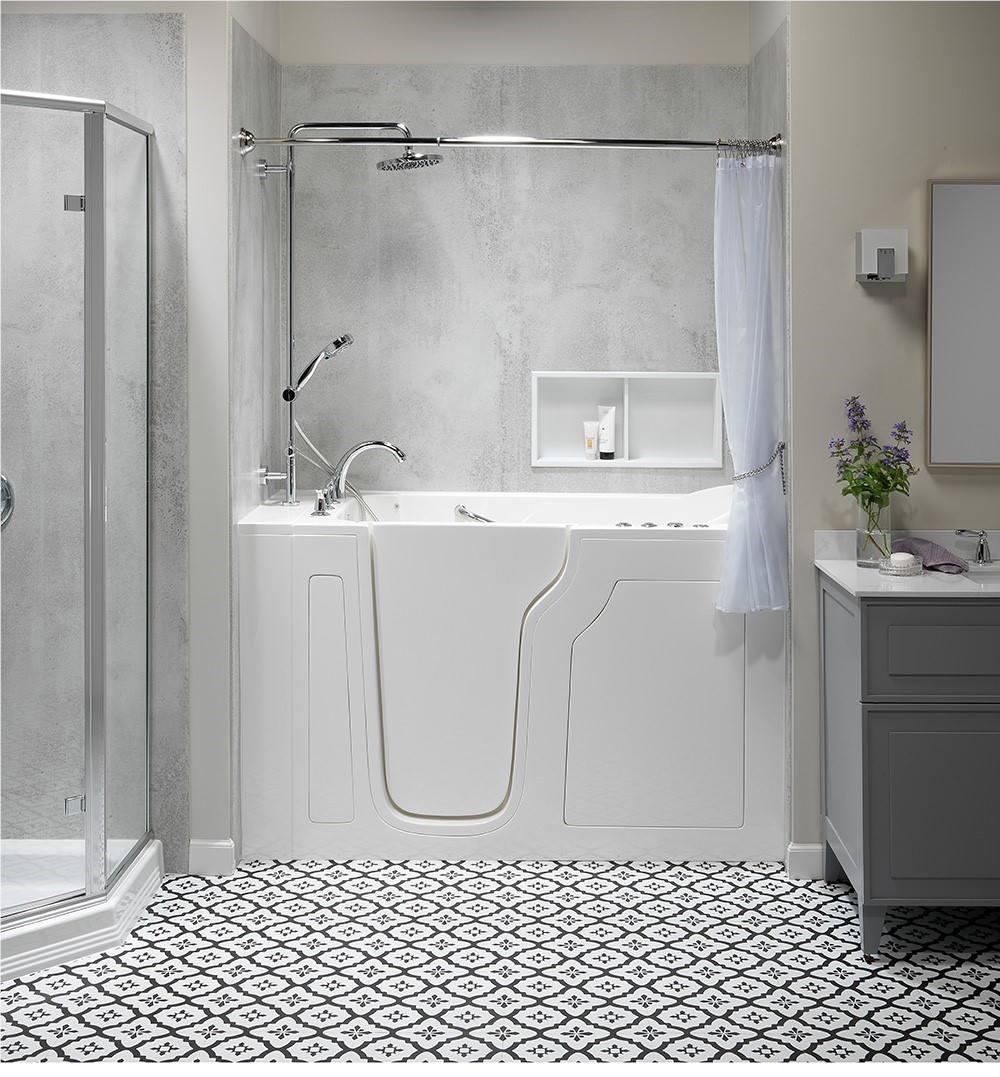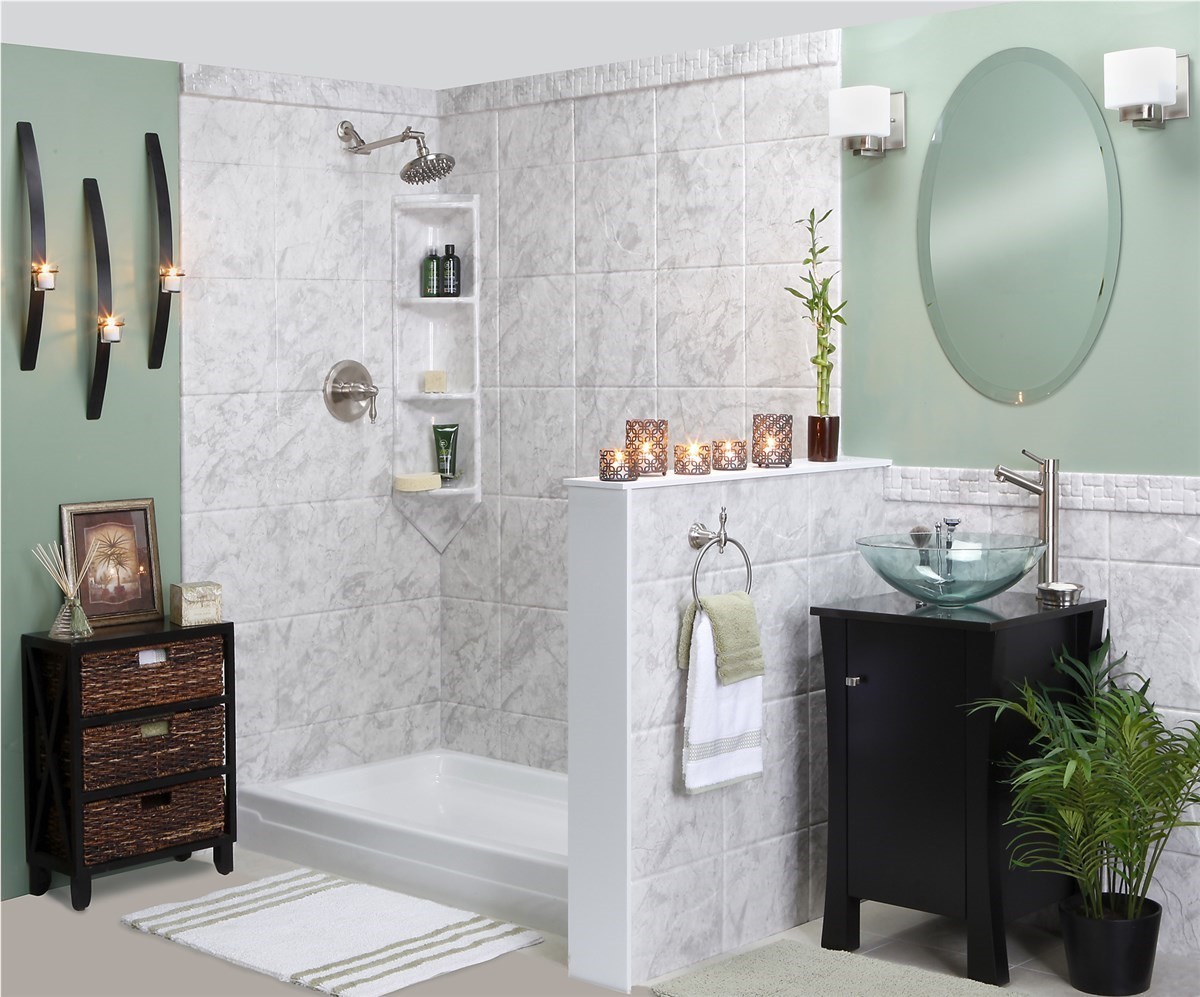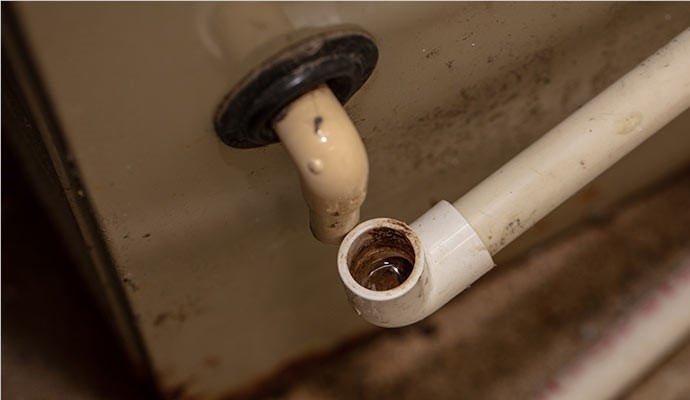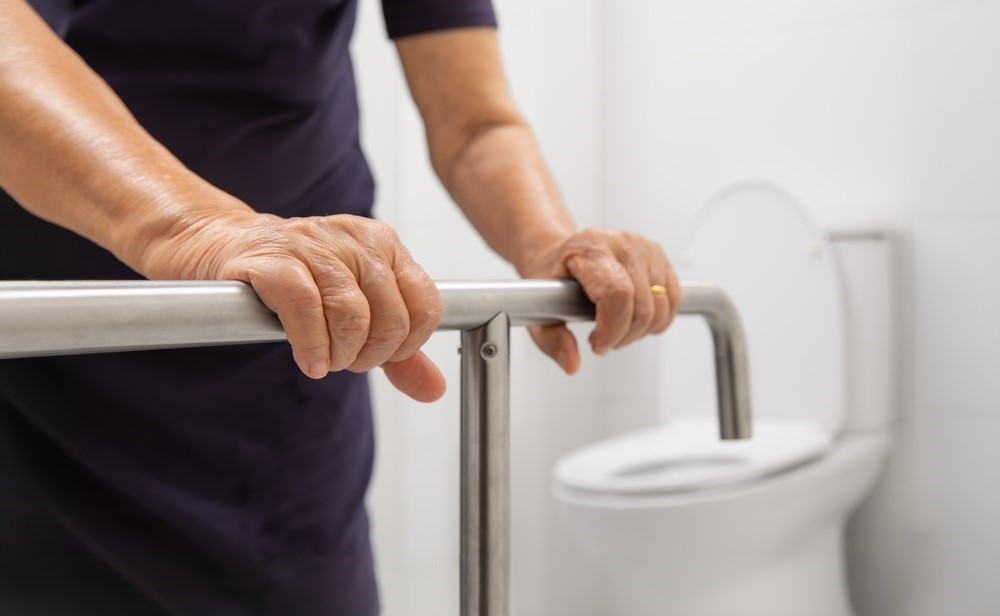
As we age, stepping 14 inches over the side of a standard bathtub can become difficult and even dangerous. In fact, 80% of senior falls happen in the bathroom, due partly to stepping over high surfaces. So, if you plan to age in place, it makes sense to replace your shower/tub combo with something easier and safer to use. But, is it best to buy a walk-in shower or a walk-in tub for seniors?
Here’s everything you need to know to make the best choice.
What Are the Key Differences Between Walk-In Showers and Walk-In Tubs?
Walk-in showers and walk-in tubs each have accessibility and safety features that make them ideal for seniors. You’ll learn more about those in the “Pros” sections that follow. But there are a few differences that you should know before we talk about Pros and Cons:
Doors
Walk-In tubs
Walk-In tubs feature a door in the front. So, they're much easier and safer to use than a standard bathtub. When you open the door, you'll still have to step over a threshold to enter or exit the tub. Many walk-in tubs have thresholds between five to seven inches high. This is much lower than a traditional tub, but can still be difficult to manage. At Innovative Baths, we sell Boca walk-in tubs. Boca has the lowest thresholds in the industry at only two inches high, making them the easiest to step over.
Walk-in Showers
Walk-in showers also have a low threshold for easy entry. But walk-in showers leave doors off completely. This keeps the opening wide enough for walkers or other aids you may need as you age. The wider opening also makes it easier for someone to assist you in getting in and out of the shower, if that’s ever necessary.
Personal Sizing
Walk-In tubs
The size of your walk-in tub should match the size of your body. If the tub is sized for a large person and you’re small, the jets won’t hit you in the right spots. Or, if the tub is small and you’re large, your hips will be cramped and the water won’t come up high enough to cover your entire body. So, it’s very important to pick the right size. Walk-in tubs range in size from small to extra large to Big and Tall. Big and Tall tubs are four inches longer than the other sizes to accommodate even the tallest people. (They even fit our CEO’s dad, who stands at an impressive six feet five inches tall.)
Walk-in Showers
Walk-in showers are a universal fit. They accommodate most anyone of any size.
Water-Usage
Walk-In tubs
Walk-in bathtubs use more water than walk-in showers. On average, you can expect to use 40-50 gallons of water per bath.
Walk-in Showers
Showers use less than 20 gallons of water on average.
What Are the Pros of Walk-In Showers for Seniors?
Safety and Accessibility
Walk-in showers may be better for you if you find that sitting makes your joints stiff. But even if you want or need to sit, showers are very customizable. So, you can add shower benches or chairs. You can also add grab bars, slip proof flooring, and safety rails, depending on your needs.
Increased Home Value
Replacing a traditional tub-shower combo with a walk-in shower modernizes your bathroom and increases your home’s resale value. In fact, the value added to your home often matches the cost of installing the walk-in shower dollar for dollar.
Quick Installation
Walk-in showers are quicker to install than walk-in tubs, with installations taking as little as one day.
Less Expensive
Walk-in showers cost less than most walk-in tubs.
Grants
The VA often offers grants that help lower the cost of walk-in showers for military veterans.
What Are the Cons of Walk-In Showers for Seniors?
Heat Loss
Since they don’t have a door to contain the heat and steam, your walk-in shower might feel cooler than normal. Of course, you can always add a shower curtain if this is an issue for you.
Extra Cost for Benches
If it’s difficult for you to stand for extended periods, you will need to spend extra to add benches and seats.
No Option to Soak
Walk-in showers lack the option for a full-body soak.
What Are the Pros of Walk-in Tubs for Seniors?
Safety and Accessibility Features
A walk-in tub may be the right choice if you like or need to soak in a bath. The door makes it easy to step in and out. A built-in seat makes it easy to sit and soak without having to lower yourself to a lying position. Walk-in tubs also have highly customizable features. You can add grab bars, anti-slip flooring, handheld showerheads, and therapeutic components like massage jets and jets with microbubbles that help relieve certain skin conditions.
Pain-Relieving Benefits
Warm water and jets in a walk-in tub massage and soothe sore muscles and joints. This can reduce the need for painkillers and potentially delay the need for certain joint surgeries.
Relief from Skin Conditions
Many walk-in tubs offer microbubble technology. Microbubbles penetrate the skin's pores, helping to clean the skin and reduce pain and irritation from skin conditions like eczema and psoriasis. Our Boca walk-in tubs offer Micro Therapy® features that clean and exfoliate your skin without scrubbing with soap. Micro Therapy® eases skin irritations and provides a way for those with limited mobility to get an all-over clean without assistance.
Full Body Soak
For many, the ability to enjoy a relaxing soak in the tub is a significant advantage. Walk-in tubs make it possible for seniors to continue enjoying baths without the struggle of getting in and out of a traditional tub.
What are the Cons of Walk-in Tubs for Seniors?
Drain Time
One of the main drawbacks of walk-in tubs is the wait time for the tub to drain. Properly installed tubs usually drain in about two minutes, which isn't too long. But you will need to sit and wait before you can open the door and exit.
Add-On Costs
Since walk-in tubs need 40-50 gallons of water, you’ll probably need to upgrade your water heater. You may need to upgrade to a larger tank or tankless system, which can increase your installation costs. You will also need to pay extra for certain therapeutic features like jets and microbubbles.
No Added Resale Value
Walk-in tubs don't add resale value to your home. Since they’re sized to fit you, they might not suit potential buyers. In fact, potential buyers might see it as an unnecessary feature they need to remove.
More Costly
Walk-in tubs, especially with added features like microbubbles and jets, are more expensive than walk-in showers. Though, the therapeutic benefits may be worth the extra cost to you.
No Insurance Coverage
In Tennessee, insurance hardly ever helps cover the cost for walk-in tubs, even though they’re considered medical equipment. VA grants only help with the cost of tubs with no jets.
What is the best value for you personally?
At Innovative Baths, we stress that your needs and wants are the main factors to consider when choosing between a walk-in tub or walk-in shower.
We get nearly 10 times more calls about walk-in tubs than we do for walk-in showers—because walk-in tubs have a lot of benefits for seniors. But we’ve discovered that many callers don't like to soak in a bathtub.
If you’ve never liked to soak in a regular bathtub, then you won’t enjoy or use a walk-in tub. So, it would make more sense to choose a walk-in shower. You would get the accessibility and safety features you need, spend less, and use it more.
On the other hand, if you love to soak and have only stopped because it’s too hard to get in and out of a tub, then a walk-in tub might be your best option. Especially if you’re looking for the therapeutic benefits that only soaking or jets provide. In that case, the value of a walk-in tub could be well worth the extra cost.
Want a free in-home consultation to help you make the best decision?
If you’re in Middle or East Tennessee, our team will come out, assess your situation, and ask the right questions to help you get exactly what you need—whether that’s a walk-in shower or a walk-in tub—at a price that fits your budget. It doesn’t matter if you want a bath remodel next week or next year, now is the perfect time to start planning.
Subscribe to Innovative Home Services's Blog








Comments